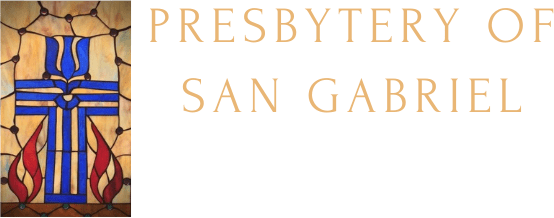What Church is For
“I was hungry and you gave me food, I was thirsty and you gave me something to drink, I was a stranger and you welcomed me, I was naked and you gave me clothing, I was sick and you took care of me, I was in prison and you visited me.”
Matthew 25:35-36
Sometimes I fear that I am too boastful about our presbytery. I often point to our presbytery in national meetings because of our diversity, our welcome to immigrant communities, and the demonstrated understanding of the Presbyterian trust clause that enables us to stay relevant in our changing community. For those who aren’t steeped in Presbyterian polity, the trust clause comes from the Constitution, G-4.0203:
All property held by or for a congregation, a presbytery, a synod, the General Assembly, or the Presbyterian Church (U.S.A.), whether legal title is lodged in a corporation, a trustee or trustees, or an unincorporated association, and whether the property is used in programs of a congregation or of a higher council or retained for the production of income, is held in trust nevertheless for the use and benefit of the Presbyterian Church (U.S.A.).
Therefore, if any property ceases to be used in accordance with the Constitution, it is to be transferred to the presbytery so it can be used more effectively in support of the mission of God through the PC(USA).
I can boast about this presbytery because all of the characteristics of diversity, immigrant welcome, and stewardship were present before I joined the staff. As I studied the history of this presbytery, there were key leaders who trusted and loved God enough to be willing to partner with new ministries if it looked like our congregations could not serve the community for whatever reason. So our churches have partnered with, and at times given property to, new churches who better reflected and served the community—and San Gabriel Valley happens to be a land of rapidly changing demographics, blessed with the presence of immigrants from many lands. I don’t know any presbytery that has kept up with the demographic changes in their territory than San Gabriel has.
This attitude of evangelism and generosity is also reflected in our presbytery’s mission statement: To expand the Kingdom of God in the San Gabriel Valley by building a relational Body of Christ that ministers to our congregations, each other, and the world.
- To strengthen, support and equip our congregations in their work of ministry;
- To take time for each other by worshiping, praying, celebrating, supporting and depending upon one another;
- To work for the transformation of the valley by sharing our faith in Jesus Christ, becoming a mosaic of Godly diversity in a deeply divided society, and by demonstrating our faith by engagement in public
In recent years, we have focused on the last part of this mission statement, paraphrasing it as a useful way to describe what we consider a vital congregation: a church that works for the transformation of its neighborhood by being disciples of Jesus Christ, reflecting God’s realm in the loving diversity of our communities, and demonstrating our faith through public engagement.
Because we have been well attuned to our mission as Christ’s church in this valley, the national staff considered us to be a model of their emerging vision for the Presbyterian Church (USA) as a “Matthew 25 church.” In fact, there was some confusion when the national church made this commitment, because we in Southern California were already connected with the Matthew 25 Southern California movement, which focuses on caring for immigrants facing distress, following Christ’s statement that “how you treat the most vulnerable is how you treat me.”
Our incoming moderator, Deborah Owens, wants us to explore more intentionally the call to be a Matthew 25 church, at the congregational and presbytery level. So starting with tomorrow’s Presbytery meeting, we will begin looking at this commitment. Specifically, the Presbyterian Mission Agency asks Matthew 25 congregations and presbyteries to embrace one or more of these three focuses:
- Building congregational vitality by challenging people and congregations to deepen their faith and get actively and joyfully engaged with their community and the
- Dismantling structural racism by advocating and acting to break down the systems, practices and thinking that underlie discrimination, bias, prejudice and oppression of people of
- Eradicating systemic poverty by working to change laws, policies, plans and structures in our society that perpetuate economic exploitation of people who are
I have been impressed with how our churches are already reflecting both these models of faithful churches, as described by our own mission statement and now by the national church. I look forward to discussing this more, starting with our Presbytery meeting, and throughout WinterFest’s week of educational gatherings.
And may God continue to bless you and all our congregations, as we seek to be ever more faithful in Christ’s service.
See you tomorrow and next week!
Wendy
